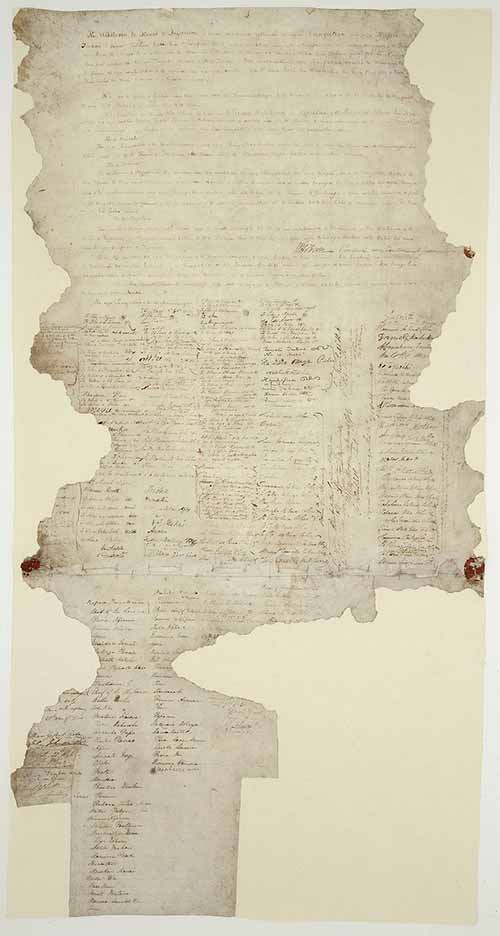
Today, 6 February, we in Aotearoa New Zealand commemorate the signing of Te Tiriti o Waitangi / the Treaty of Waitangi in 1840, 180 years ago.
Generally, in this land, religion is underrated. Knowledge about religion (be it Christianity or any other significant world religion) is abysmal. Only yesterday, I discovered journalist Chelsea Daniels had misreported in the New Zealand Herald that in NZ there are now only 182 RC religious sisters in the whole country – there are actually 942. Sure, (as a television programme that picked up her story indicated) the numbers are getting smaller, but if you cannot distinguish between priests in a religious order and female religious (the error she made), you should be unqualified to produce religious news that claims it is “A news source for New Zealand that you can count on“.
Our educational curriculum, strongly influenced by post-modernism, has little specified content – and that includes no requirement to teach about the Treaty! On 12 September 2019, Prime Minister Jacinda Ardern and Education Minister Chris Hipkins announced that New Zealand history will be taught in all schools and kura by 2022. There is also regular misunderstanding about the distinction between religious education and evangelisation…
Thomas Kendall of the Anglican Church Missionary Society (CMS), one of the first three missionaries to settle in New Zealand, published the first book in Māori in 1815: A korao [kōrero] no New Zealand; or, the New Zealander’s first book; being an attempt to compose some lessons for the instruction of the natives. In 1820 he and the chiefs Hongi Hika and Waikato visited England to work with Cambridge University linguist Samuel Lee to produce the first Grammar and vocabulary of the language of New Zealand.
Thousands of biblical texts were printed and distributed.
In the 1830s there were more and more Pakeha European immigrants arriving in Aotearoa, and there was no real “European/British” legal or justice system here under which these immigrants were clearly bound. Missionaries here were increasingly concerned about the effect of these immigrants on Māori. They believed a formal relationship via a treaty with the British Crown was needed to protect Māori.
In Britain, at this time, there were networks of strong Christian parliamentarians and public servants. The 1830s was when Christians pressured the British parliament to abolish slavery in the British empire. The majority of the people in the British Colonial Office were also part of these strongly influential Christian groups. This office oversaw what was happening in the colonies.
So, in Britain also, these influential British Christians campaigned for the protection of
Māori.
James Stephen, the brother in law of William Wilberforce, was the permanent undersecretary in the Colonial Office. He was profoundly influenced by the life and teachings of Christ, and a big part of the British side of the Treaty’s story.
James Stephen drafted the instructions which were given to William Hobson when he was sent to New Zealand in 1840. These instructions included:
All dealings with the Aborigines for their Lands must be conducted on the same principles of sincerity, justice, and good faith as must govern your transactions with them for the recognition of Her Majesty’s Sovereignty in the Islands. Nor is this all. They must not be permitted to enter into any Contracts in which they might be ignorant and unintentional authors of injuries to themselves. You will not, for example, purchase from them any Territory the retention of which by them would be essential, or highly conducive, to their own comfort, safety or subsistence. The acquisition of Land by the Crown for the future Settlement of British Subjects must be confined to such Districts as the Natives can alienate without distress or serious inconvenience to themselves. To secure the observance of this rule will be one of the first duties of their official protector.
You will recognise the connection with the articles of the Treaty.
Māori saw and see the Treaty in spiritual and Christian terms. The Te Reo name for the Treaty is ‘Te Kawenata o Waitangi’ (‘the Covenant of Waitangi’).
Hobson said to each signing chief “He iwi tahi tatou” (“we are one people”). The missionary, Henry Williams, had come up with those words based on the letter to the Ephesians.
Missionaries with considerable mana with Māori – particularly Henry Williams – took the Treaty throughout the country to be signed. Māori often signed because of the trust they had in the missionaries.


